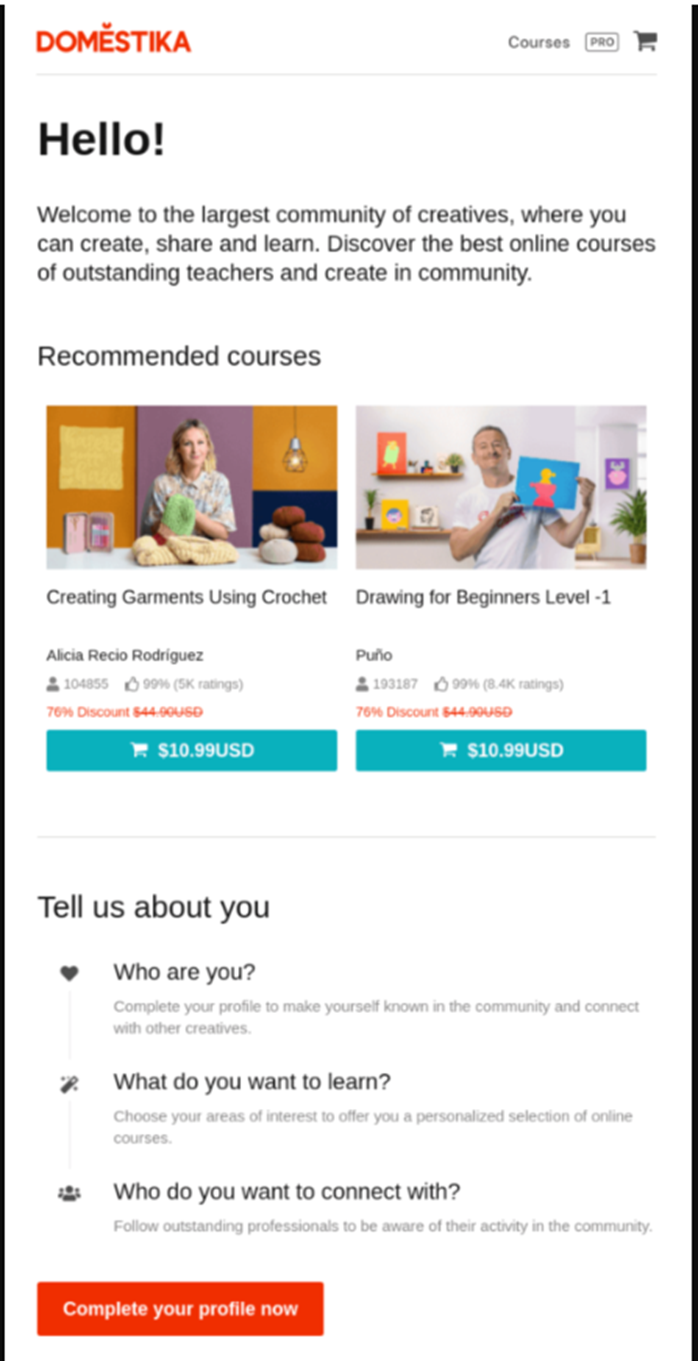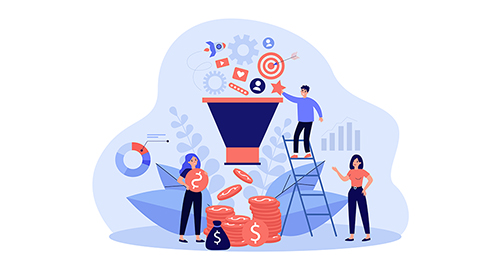How do Drip Campaigns Work? What are the Use Cases and Examples?
Do you want to get more sales by doing less? A drip campaign is the ultimate solution to it. Its main objective is to nurture and engage leads, deliver top-quality content, and convert leads into loyal consumers. Drip campaigns let you meet your potential customers at every step of the sales funnel. However, before diving deep into how a drip campaign works and its use cases and examples, let us first understand what it is.
What Is a Drip Campaign?

Simply put, a drip campaign is a series of scheduled emails sent to prospects. The drip campaign is also known as:
- Automated email campaigns
- Autoresponders
- Lifecycle emails
- Marketing automation
Whatever you call it, it all means the same – you create a series of emails and send them strategically to achieve a specific goal.
For example, you can create a drip campaign to nurture your new contacts. The following email series can be used for it.
- You can schedule the first email after an hour of your contact signup for the email list. It will be the welcome email.
- On the second day, you can send an email describing the benefits of your signature service.
- You will only send the third email to those who have opened the second email. In this email, you will include a promotional deal on the service.
The benefit of a drip campaign is that it automatically runs. Therefore, you can create the emails in advance, and after that, you can make use of the automated system to send those emails whenever you want.
Amazing, right?
Now, one question arises: do these drip campaigns really work?
Here are some statistics that show drip campaigns really work.
As compared to the single email campaigns, drip campaigns have 80% higher open rates and 3x higher CTR. You can expect approx. 34% rise in revenue by using a drip campaign.
Why Run a Drip Campaign?
A drip campaign can be a game-changer for your business. Here is how it can help you improve your ROI.
The key reason to run a drip campaign is to convert your prospects into loyal customers. A drip campaign helps you target specific user groups by segmenting email lists according to demographics, gender, signup date, purchase history, and which emails users find useful and engaging. Therefore, you can easily reach the people who are ready to buy your product/service.
Here are the reasons why you should run a drip campaign.
- Lead nurturing
- Customization & segmentation of email lists
- Save you time and ensure consistency
- Consumer retention & engagement
- Re-engagement with inactive consumers
- Tracking & analysis
- Sales & Conversion
What Are the Types of Drip Campaigns?
There are various drip campaigns, each with its unique purpose and strategy. Here are some common types of drip campaigns.
- Welcoming drip campaigns
- Onboarding drip campaigns
- Lead nurturing drip campaigns
- Re-engagement drip campaigns
- Post-purchase drip campaigns
- Abandoned cart drip campaigns
- Newsletter drip campaigns, etc.
How Does a Drip Campaign Work?
Let’s understand how a drips campaign works through the following simple example.
Suppose you want to provide your leads information regarding your product/service and its benefits and convert them into loyal customers. Here are the steps that you can follow.
The first step is to send a white paper to your leads. If your prospect opens the white paper, you can send them an eBook for more details. This eBook will contain detailed information about the product and its benefits. You can schedule a personal call or meeting if the prospect opens the eBook. However, if the prospect doesn’t open the eBook, you can send them a video demonstrating information regarding your product/service and keeping them engaged.
Now, what if your lead does not open the white paper? Well, in this case, you can send them a video overview of your product/service, which will showcase the benefits of your product.
If the prospect opens the video, then send them an eBook. Once the lead opens the eBook, you can schedule a meeting or personal call.
If prospects do not open the video, you should remove them from the list and add them to the re-engagement campaigns so you can contact them later.
Which Tips Should You Keep in Mind while Creating a Drip Campaign?
Here are a few tips you should remember while designing your drip email campaign.
- Include relevant and personalized visuals in your emails such as vector graphics or data-driven charts.
- Provide a clear call-to-action in your email.
- Add your brand logo at the top of all emails.
- Don’t forget to include social media links to your platforms.
- Include a user-friendly, well-optimized, and well-designed layout.
- Never forget to include a link to unsubscribe. Add it at the bottom of each email.
Examples of Drip Campaigns
Now that you understand the basics of drip campaigns, here are a few examples of email drip marketing campaigns. You can set up this campaign using drip automation tools.
Here is how you can set up a welcome series.
1. Welcoming drip campaign
The main objective of this campaign is to welcome a new user or a subscriber and initiate positive bonding with the prospect. Check out this email from Todd Snyder.

Image source: Todd Snyder
2. Onboarding Email Drip Campaign
If you have a business of software or you provide online courses, your subscribers will opt for monthly recurring service, or they need to get hand-holding on the product.
In such a case, you can do a smooth onboarding campaign like Domestika, as shown in the image.

Image Source: Domestika
In their onboarding email, they welcomed newly signed subscribers and offered them an option to buy the top courses. They have even urged them to complete their profile so the user information they can use to personalize the recommendations.
You can also set up the onboarding series like this. Let us help you replicate it.
- On day 0, you can share access to the new subscribers. You can share id, password, and a start guide with them.
- In the next step, on day 1, you can share information about your product/service, highlighting benefits and key features through an eBook or a video.
- Now, on day 5, encourage users to take their first actions. These actions can include setting up the profile, making the first purchase, or any other meaningful step. So, please provide a clear CTA to guide them.
- After two days, on day 7, you can request feedback about your subscribers’ initial experience with your brand. For that, you can share a small survey or simple reply-based questions. It will make them feel valued, and they will feel like you are there to resolve any issues.
- On day 10, you can try to extend engagement by sharing an email about the advanced features of your product or any upcoming events. Your subscribers can join these communities to maximize their experience.
This email sounds and feels like a personal note. The email contains a personal signature that gives a personal touch to the welcome message. It will surely melt the reader’s heart; if it does not, then the 15% coupon will surely be!
Strategize Your Welcome Series Drip Email Campaign
On Day 0, you can send personalized welcome emails to new subscribers who have joined your community or placed their first order. To create a positive impression, you can even offer special discounts or gifts. Keep the tone warm and welcoming.
Now, on Day 1, you can share your brand’s story, values, USPs, etc., to introduce your brand to them. Include testimonials or success stories; it will help you build trust and credibility and make your subscribers feel engaged and valued.
On Day 3, you can share the benefits of your product, services, how-tos, tips, FAQs, etc. This way, you can provide great value to your subscribers, who will feel they have made the right decision by engaging with your brand.
Epilogue
Drip campaigns are a powerful strategy you must include in your sales or email marketing strategy. It will help you grow and nurture leads and increase engagement and ROI.
Once you have set up the initial process of a drip campaign and optimized the campaign with engaging and relevant content, you can use the automation tool to do the rest of the work and focus on growing your business.
A drip email campaign will turn your lead into a user and convert them into your loyal customers. Your automated drip campaign will work as your full-time marketers and bring you more sales.
All you need to remember is to send the right message at the right time to the right people, and you can focus on your core business work without any stress. You can make informed decisions regarding the right time to send email, content creation, and audience segmentation, resulting in more customized and targeted communication.
FAQs
- Which industries can use drip campaigns?
Almost all industries related to sales and marketing can use drip campaigns to promote their services and products. However, industries like hospitality, real estate, fitness, and e-commerce can make the most out of it.
- Does the drip campaign work?
The short answer to this question is YES. As these campaigns are highly targeted, they let you choose your target audience and which people will receive which type of email.
- How many emails should be there in a drip campaign?
It totally depends on the purpose and duration of the campaign. However, the best practice is to include 5 to 6 emails in each campaign.
- How do you add leads to the drip campaign?
First, let’s consider that you have an active drip campaign. Now, all you have to do is add the prospect to the specific list and according to the designed step, the drip campaign will send emails.




Leave a Reply